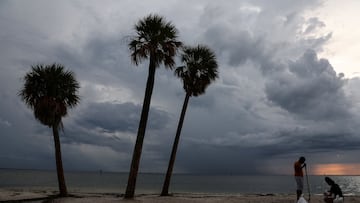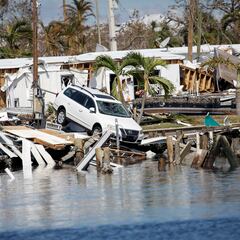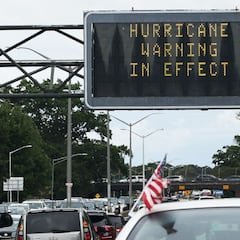When will Hurricane Helena hit Florida? What counties will be most affected?
A tropical system in the Caribbean, one being baptized Helene, could develop into a major hurricane as it moves north through the Gulf of Mexico.

Another storm is brewing that is expected to develop into a major hurricane, potentially a Category 3, in the coming days. Currently, the tropical low pressure system is located in the Caribbean but meteorologists predict that it will make its way north passing between the Yucatan and western Cuba as it enters the Guld of Mexico.
Florida Gov. Ron DeSantis declares state of emergency
Spaghetti models at this time show several routes but all lead to it making landfall somewhere along the coast of Florida between Tampa and Tallahassee, predicted to occur Thursday afternoon. In light of the threat the storm presents, Florida Governor Ron DeSantis has declared a State of Emergency in 41 counties.
.@NOAA's #GOESEast is closely watching Potential Tropical Cyclone #Nine this afternoon.
— NOAA Satellites (@NOAASatellites) September 23, 2024
Keep track of the latest forecast with our Hurricane Tracker: https://t.co/6nmkHtqhA1 https://t.co/j5nl9nqBLg pic.twitter.com/5k3RpKlD1Z
Counties expected to be hit by Hurricane Helene
The 41 counties that are included in the State of Emergency declaration include: Alachua, Bay, Bradford, Calhoun, Charlotte, Citrus, Collier, Columbia, Dixie, Escambia, Franklin, Gadsden, Gilchrist, Gulf, Hamilton, Hernando, Hillsborough, Holmes, Jackson, Jefferson, Lafayette, Lee, Leon, Levy, Liberty, Madison, Manatee, Marion, Monroe, Okaloosa, Pasco, Pinellas, Santa Rosa, Sarasota, Sumter, Suwannee, Taylor, Union, Wakulla, Walton, and Washington.
🌀Potential Tropical Cyclone 9 may impact Florida later this week. Prepare your home NOW. If you can pick it up, put it up!
— FL Division of Emergency Management (@FLSERT) September 23, 2024
Anything left outside of your home can become dangerous debris in high winds.
Continue to monitor the weather & listen to all orders by local officials. pic.twitter.com/wNba7laDHr
DeSantis issued Executive Order (EO) 24-208 on Monday “based on atmospheric and oceanic data, highly conducive environmental conditions are forecast to organize and develop Potential Tropical Cyclone Nine into a tropical depression or tropical storm.” When it does in the coming day or two, it will be baptized Helene.
“Forecast models indicate that this system will have a vast areal extent, and its impact will likely extend well beyond its center, along the northeast Gulf Coast,” which will bring “a significant threat of storm surge, coastal flooding and erosion, heavy rainfall and flash flooding, and damaging winds to the Florida Gulf Coast.”
Related stories
“Now is the time to make an emergency plan, know your evacuation zone, and be as prepared as possible for the storm.,” DeSantis posted on X. “Follow [the Florida Division of Emergency Management on social media] and your local emergency management for important updates, resources, and recommendations to stay safe,” he added.
The effects of the weather conditions that the tempest could bring could damage the operational capabilities of critical infrastructure. This could include major interstates, roadways, bridges, airports, schools, hospitals, power grids and more. Be prepared for widespread power outages due to fallen trees and powerlines.



Complete your personal details to comment